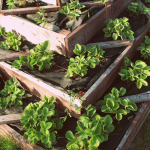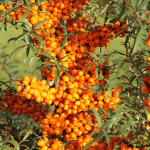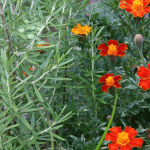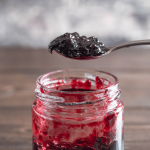The Resilient Journey of Our Pomegranate Trees Grown from Seed
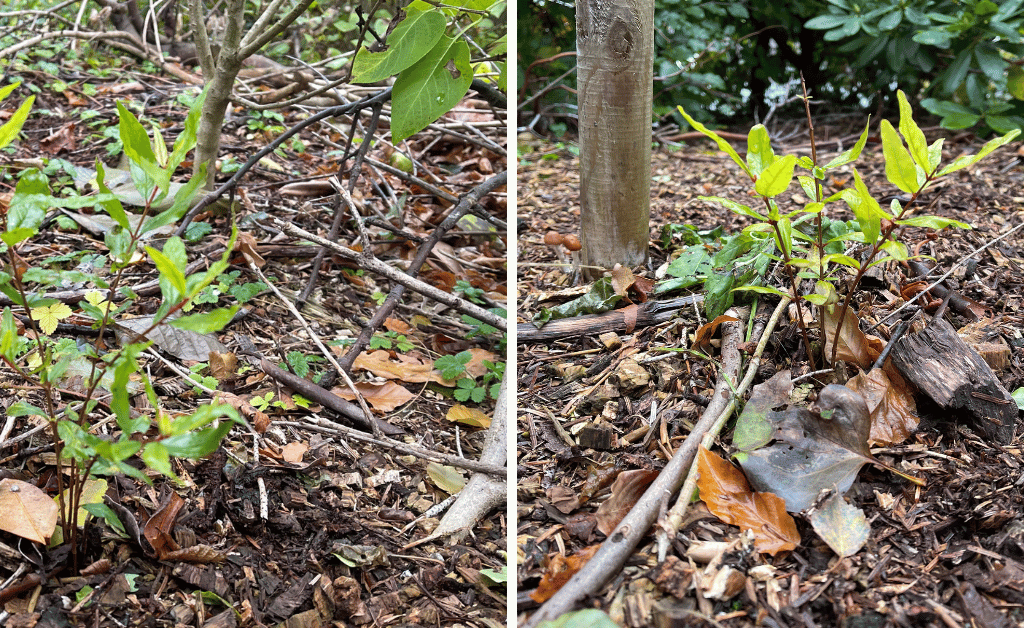
Pomegranate trees have long been admired for their vibrant flowers and succulent fruits, but for our family, they hold a special significance that goes beyond their aesthetic or culinary appeal. These particular trees are not just any pomegranates; they are a testament to resilience, patience, and the joy of gardening. Grown from seeds extracted from store-bought fruit, these trees have become a cherished part of our garden landscape.
Interestingly, my journey with pomegranate trees began with two unsuccessful attempts to grow them from seeds. Despite the setbacks, my oldest daughter took on the challenge and managed to cultivate these trees successfully. Her efforts bore fruit, metaphorically speaking, and two of these pomegranate saplings were transplanted outdoors in the summer of 2022.
As we prepare these young trees for their second winter, we reflect on the lessons learned from their first year and look forward to the unique challenges and rewards that lie ahead. For those interested in embarking on a similar journey, our Where to Get Seeds article offers valuable insights into sourcing quality seeds for your gardening projects.
The Genesis of Our Pomegranate Trees
Growing a tree from seed is a rewarding yet challenging endeavor, requiring patience, care, and a bit of luck. Our pomegranate trees are a living testament to this, having been successfully cultivated by my oldest daughter after my own two failed attempts. In this section, we’ll delve into the process of growing these pomegranate trees from seed and the importance of using quality seeds for successful germination and growth.
The Importance of Quality Seeds
The journey of our pomegranate trees began with seeds extracted from a store-bought fruit. While it’s possible to use seeds from various sources, the quality of the seed plays a crucial role in the germination process. Poor-quality seeds may result in weak plants or even fail to germinate altogether. Therefore, it’s essential to ensure that the seeds you use are fresh and free from mold or other contaminants.
Key Takeaways:
- Quality seeds are essential for successful germination and healthy growth.
- Store-bought fruits can be a viable source of seeds, but ensure they are fresh and free from mold or other contaminants.
The First Winter: A Lesson in Resilience
Winter can be a formidable adversary for any gardener, but it poses unique challenges for those growing pomegranate trees, especially in climates like USDA Zone 7. Our trees faced their first winter last year, and while they did die back, they also showed remarkable resilience by coming back to life as the weather warmed. This section will explore what happened during that first winter and the factors that contributed to their dieback and subsequent revival.
Factors Contributing to Winter Dieback
Dieback in winter is not uncommon for young or newly transplanted trees. Several factors contributed to this phenomenon in our pomegranate trees:
- Temperature Fluctuations: Sudden drops in temperature can shock young trees.
- Soil Moisture: Overly wet or dry soil can exacerbate the stress on the trees.
- Lack of Protective Measures: Our failure to cover the trees last winter likely played a role in their dieback.
Key Takeaways:
- Understanding the factors that contribute to winter dieback can help in better preparing for subsequent winters.
- Protective measures like winter covers can mitigate the risks associated with winter dieback.
Preparing for the Second Winter: Lessons Learned
Learning from the experiences of the first winter, we are taking proactive steps to ensure the pomegranate trees are better prepared for the upcoming cold months. This section will discuss the specific preparations we are making, including protective measures and soil management, to help the trees thrive during their second winter.
Importance of Winter Covers
One lesson learned from last winter is the significance of using winter covers to protect young trees. These covers can be made from various materials like burlap or specialized tree wraps and serve to insulate the trees from harsh winds and temperature fluctuations.
- Materials Needed: Burlap, stakes, and twine (Metric: 2-3 meters; US Imperial: 6-10 feet)
- Procedure: Wrap the burlap around the tree and secure it with stakes and twine.
Key Takeaways:
- Winter covers are essential for protecting young trees from the elements.
- Choose materials that are breathable yet insulating.
Soil and Nutrient Management
Soil quality and nutrient levels play a crucial role in how well a tree can withstand winter stress. Ensuring that the soil is well-drained yet retains enough moisture can make a significant difference.
- Soil Testing: Conduct a soil test to determine nutrient levels and pH.
- Amendments: Based on the test results, add necessary soil amendments like compost or lime.
Key Takeaways:
- Proper soil management can improve a tree’s resilience during winter.
- Conduct soil tests and make necessary amendments before winter sets in.
The Impact of Nitrogen Fertilization on Pomegranate Trees
In the realm of pomegranate care, the role of fertilization is often debated. A 2017 study sheds light on this subject, particularly focusing on the effects of foliar nano-nitrogen and urea fertilizers on pomegranate fruit properties.
Key Findings:
- Increased Fruit Yield and Number: The study found that foliar nitrogen fertilization increased fruit yield by 17% to 44% and the number of fruits per tree by 15% to 38%.
- Fruit Quality: The application of nano-nitrogen fertilizer at a rate of 1.8 kg N/ha improved fruit quality more effectively than urea applications at a rate of 16.3 kg N/ha. This was evident in increased total soluble solids and titratable acidity.
- Leaf Nutrient Concentration: Nitrogen fertilization increased the leaf concentration of nitrogen, which is essential for the overall health and resilience of the tree.
Our Personal Approach:
While these findings are intriguing, it’s worth noting that we personally do not use any synthetic fertilizers on our pomegranate trees. Instead, we are fond of using nitrogen-fixing perennials to enrich the soil naturally. This approach aligns with our commitment to sustainable and eco-friendly gardening practices.
The Role of Climate and Geography
Climate and geography are often the unsung heroes or villains in the story of any garden. For our pomegranate trees, USDA Zone 7 and the Scandinavian climate present both challenges and opportunities. This section will explore how these climatic conditions impact the growth and resilience of our pomegranate trees.
Adapting to Local Conditions
USDA Zone 7 is on the edge of what is typically recommended for pomegranate trees. While the cold may be manageable, the lack of consistently warm and sunny days can pose a challenge, especially for fruit production. However, our primary aim is not fruit production but rather the aesthetic and ecological value these trees bring to our garden.
Key Takeaways:
- USDA Zone 7 offers a unique set of challenges and opportunities for growing pomegranate trees.
- Adapting care routines to local climatic conditions can enhance the tree’s resilience and overall health.
Future Expectations and Goals
Beyond Fruit Production: The Aesthetic and Ecological Value
While many gardeners grow pomegranate trees with the hope of harvesting fruit, our primary aim is different. We value the aesthetic and ecological contributions these trees make to our garden. Their vibrant foliage and potential for beautiful flowers add a unique charm that enriches our outdoor space.
Thriving in USDA Zone 7: A Unique Challenge
Growing pomegranate trees in USDA Zone 7 is a unique challenge, given that it’s on the cusp of what is normally recommended for these trees. While the cold may be manageable, the lack of consistently warm and sunny days could be a challenge for fruit production. However, our goal is to see these trees thrive, adding beauty and diversity to our garden.
The Joy of the Journey and Future Updates
The true reward lies in the journey itself—the challenges overcome, the lessons learned, and the joy of seeing these trees grow and adapt to their environment. I aim to provide updates on the progress of these trees in the coming years, and especially if they ever bear fruit, adding another layer of excitement to this gardening adventure.
Conclusion
Our pomegranate trees have been a journey of resilience, adaptation, and learning. From their genesis as seeds from a store-bought fruit to their challenges and triumphs through winters, these trees have become a cherished part of our garden and our lives. While they may never bear fruit due to the limitations of our USDA Zone 7 climate, their aesthetic and ecological value cannot be overstated. As we prepare for another winter, we are armed with the lessons of the past and the optimism for a resilient future. We encourage our readers to embrace the challenges and rewards of gardening, focusing not just on the end result but on the enriching experience it offers.
Further Reading
If you enjoyed learning about our journey with pomegranate trees in USDA Zone 7, you might also find our experiences with other Zone 7-compatible plants intriguing. Dive into our article on Hybrid American Chestnuts Grown in Norway Zone 7 to explore another resilient species that thrives in similar conditions.

